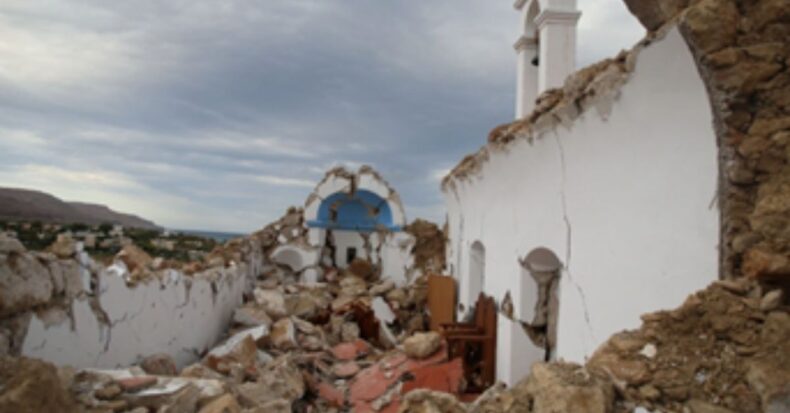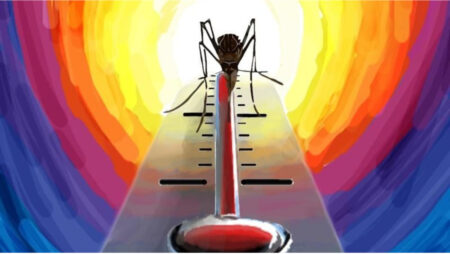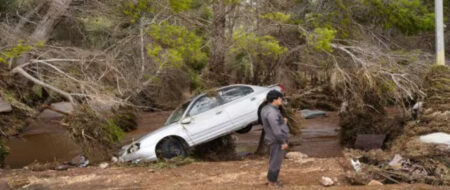A powerful earthquake has rocked many Greek islands and other Eastern Mediterranean regions, including Turkey’s southern Antalya and Egyptian cities.
On Monday, the tremor was felt on the Greek islands of Karpathos, Crete, Santorini, and Rhodes as a strong earthquake hit off.
In a posting on the European Mediterranean Seismological Centre’s website, a witness in Lindos, Rhodes, claimed, “Really felt that one… lasted for 30 seconds.”
The United States Geological Survey estimated the tremor’s magnitude to be 6 and its depth to be 37.8 kilometres (23.5 miles).
It also jolted the Cypriot capital of Nicosia, Lebanon’s Beirut, Egypt’s Cairo and other towns, parts of Israel and the Palestinian Territories, and the region near Antalya in southern Turkey, according to Reuters.
The epicentre was 155 kilometres from the Turkish shore, according to Afad, Turkey’s disaster management agency. The quake struck 155 kilometres (96 miles) off the coast of Kas, Antalya province, with a preliminary magnitude of 6.
Saban Arda Yazici, the district governor of Kas, said officials have received no reports of damage or injuries in Kas or its vicinity.
In recent weeks, two severe earthquakes shook Crete, killing one person and destroying houses. According to a Greek seismologist, Tuesday’s quake originated on a different African fault, and no aftershocks are likely.
The quake confirmed the region’s recent increasing seismic activity. People were frightened last week when a magnitude 6.3 earthquake struck near Crete, and it was felt as far as Athens, Greece’s capital, 400 kilometres (249 miles) distant.
What is an earthquake?
When two slabs of the ground abruptly move past one another, an earthquake occurs. The fault or fault plane is the surface where they slip. The hypocenter is the point beneath the earth’s surface where the Earthquake begins, while the epicentre is the location directly above it on the earth’s surface.
Foreshocks can occur during an earthquake. These are lesser earthquakes that happen in the exact location as the next big Earthquake. Scientists can’t identify if an earthquake is a foreshock until the main event occurs. The mainshock is the most significant and most potent Earthquake, and Mainshocks are always followed by aftershocks.
These are lesser earthquakes that strike near the epicentre of the mainshock. Aftershocks can last for weeks, months, or even years after the mainshock, depending on the size of the mainshock!
Where do earthquakes occur, and what causes them?
The inner core, outer core, mantle, and crust are the four primary layers of the earth. A thin skin covers the surface of our planet, consisting of the crust and the top of the mantle.
But this skin isn’t all one piece; it’s made up of several sections that cover the earth’s surface like a puzzle. Not only that, but these jigsaw pieces continue to move around, sliding past and colliding with one another. These puzzle pieces are referred to as tectonic plates, and the margins of the plates are referred to as plate boundaries.
The plate boundaries are made up of many faults, and most earthquakes occur on these faults around the planet. Because the plates’ edges are rough, they become stuck while the rest of the scale moves. When the plate has shifted far enough, the margins of one of the faults unstick, and an earthquake occurs.
When there is an earthquake, why does the earth shake?
The energy that would ordinarily force the blocks to move past one another is stored while the edges of faults are glued together, and the rest of the league is moving. All of the stored energy is released when the force of the sliding blocks finally overcomes the friction of the fault’s sharp edges, and it unsticks.
Like ripples on a pond, energy spreads outward from the fault in all directions as seismic waves. Seismic waves shake the earth as they travel through it, and when they reach the surface, they shake the ground and everything on it, including our homes and ourselves!
Things to follow during an earthquake:
- The safest location to be during the event is in an open area away from buildings.
- If you’re inside, seek shelter under a desk, table, bed, or doorway, as well as against interior walls and a stairwell. Avoid glass doors, glass panes, windows, and exterior doors. To avoid a stampede, do not rush out of the building.
- Stay away from structures and utility wires if you’re outside.
- When you’re out in the open, stay there until the tremors subside.
- If you’re in a moving vehicle, come to a complete stop as soon as possible and stay in it.
- If you’re in a moving car, come to a complete stop as soon as feasible and stay in it.
- Allow all pets and domestic animals to run around outside.
- Candles, matches, and other open flames should not be used. Put out all of the blazes.
There were no initial reports of injuries or substantial damage in Turkey or Egypt, according to officials.
According to the Greek Institute of Geodynamics, the quake’s epicentre was 58 kilometres (36 miles) deep, 127 kilometres northeast of Karpathos.
In a posting on the European Mediterranean Seismological Centre’s website, a witness in Lindos, Rhodes, remarked, “Really felt that one… Lasted for 30 seconds.”
No aftershocks are likely, according to a Greek seismologist. Because of the fault lines that run through the region, earthquakes are widespread in Greece and Turkey.













